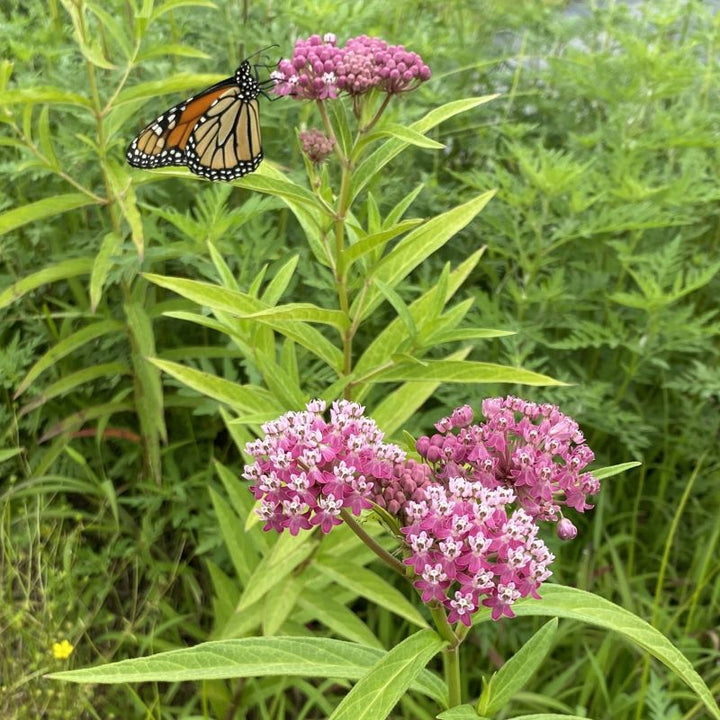Asclepias incarnata (Swamp Milkweed) Unity Grown
- In Stock
- Inventory on the way
Asclepias incarnata, also known as swamp milkweed, is an upright, perennial wildflower widely known as an integral food source for the larval stages of the monarch butterfly (Danaus plexippus). Found in wetter locations across much of the contiguous United States, Asclepias incarnata grows to 3-5' tall and 1-2' wide, and is easily identified by its toxic milky sap that is produced from damaged tissues (hence the name milkweed), as well as its showy, pink-purple flowers, which bloom from mid summer into the fall. After flowers begin to fade, swamp milkweed produces large, interesting looking seed pods that will eventually split and scatter downy seeds into the wind. Beyond its attractive off-season interest, the plant's toxic sap makes it resistant to deer and rabbit foraging, and its large blooms are sweetly fragrant, adding further appeal to the home garden.
Swamp milkweed, as the name implies, thrives in wet, fertile conditions, and does best in full sun, making it an excellent addition to any location near water, including wet meadows and riverbanks, as well as rain gardens. Though the plant's large size and tendency to reseed rapidly make it less ideal for traditional garden settings, swamp milkweed attracts monarchs and a variety of other butterflies and pollinators, making it an excellent choice for a variety of sites in the landscape. With its obvious value to butterflies, and its less obvious value to hummingbirds and bees, Asclepias incarnata is a great choice for pollinator gardens, wetter wildflower meadows, wetland restoration projects, and for naturalizing in a variety of mitigation projects.





